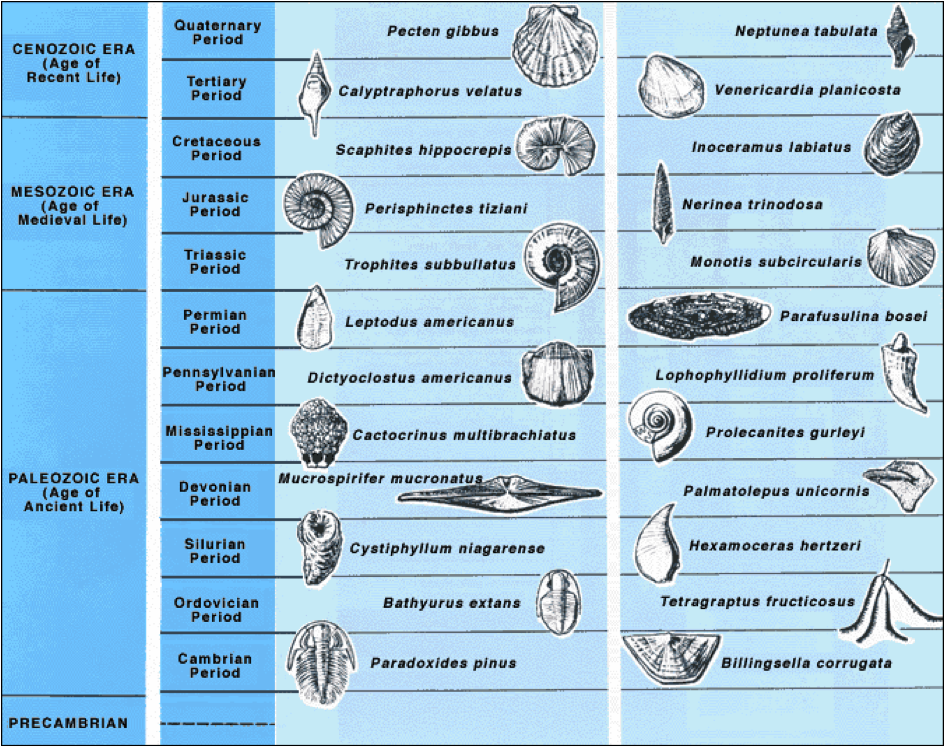The oldest continental rocks are found in cratons. A craton is a stable part of the continental lithosphere,
A fossil is a remnant, or the moulding, of an animal or a plant preserved in a sedimentary rock.
Fossils are very useful to the study of tectonic history. When a fossil of a given species is found on several modern continents, it gives a strong indication that these continents were previously unified.
Fossils are also used to date sedimentary rocks. Some species with a broad distribution on Earth and a short-term life (Ammonites for instance) are great indicators to identify certain geological periods.
Finally, fossils show us the long history of life and the past and current evolution processes on Earth. The fossil records are like a book unravelling the different shapes life forms took to adapt to changing environments all along the Earth’s history.

Indicator fossils, used to define and identify geological periods. Courtesy of the U.S Geological Survey.